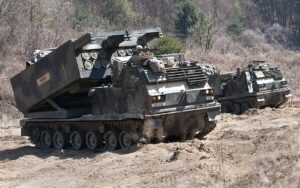Table of Contents
Cyclone Asna
Context: Recently Gujarat was hit by a Cyclone named Asna, which caused heavy rains in Kutch and Saurashtra regions.
About Cyclone Asna
- Origin Of Cyclone Asna:
- It is an extraordinary meteorological event due to its unusual origin and development.
- Unlike other tropical cyclones, which form over warm ocean waters, Asna originated over the landmass of Rajasthan and then moved into the Arabian Sea.
- According to IMD, only on three occasions (1976, 1964, and 1944), cyclones which originated over mainland India in August gathered strength as they entered the Arabian Sea.
- Cyclone Asna is the first cyclone to form in August in the North Indian Ocean (NIO) region since 1981 and the first in the Arabian Sea since 1976.
| Fact |
|
Chevron Model
Context: ONGC Videsh (OVL) has requested special permission from the USA based on the Chevron Model to manage its oil projects in Venezuela.
What is the Chevron Model?
- It allows foreign oil companies to operate in Venezuela despite U.S. sanctions.
- Chevron was the first major U.S. company to use this route to operate in Venezuela under sanctions.
- Mechanism:
- It involves receiving specific licences from the S. Office of Foreign Assets Control (OFAC) to bypass sanctions that restrict the use of American financial systems and services.
- OFAC License: This licence allows foreign companies significant control over the finances, operations, production, and marketing of oil from Venezuelan projects.
- OVL’s Approach:
- It has requested an OFAC licence to operate its Venezuelan oil projects under the Chevron model.
- OVL holds a 40% stake in the San Cristobal project and 11% in Carabobo 1, with PDVSA being the majority shareholder in both.
- PDVSA; Petróleos de Venezuela is Venezuela’s state-owned oil company.
| ONGC Videsh Limited (OVL) |
|
Net Borrowing Ceiling
Context:
- The Supreme Court will review whether states have a legal right to exceed their borrowing limits set by the Centre and if such restrictions conflict with the RBI’s role as the public debt manager.
- This issue was referred to a Constitution Bench earlier this year following a suit filed by the Kerala government.
What is the borrowing ceiling for States?
- The normal net borrowing ceiling for states is fixed at 3 % of the Gross State Domestic Product (GSDP).
- For FY24, this is equivalent to Rs 8,59,988 crore as recommended by the 15th Finance Commission.
- States are allocated an extra 5 % of GSDP borrowing capacity as a performance-based incentive for power sector reforms.
- Under this, States are eligible to borrow Rs 1.43 lakh crore on the recommendation of the power ministry for FY24.
| Constitutional Provisions |
|


 National Technology Readiness Assessment...
National Technology Readiness Assessment...
 Justice Mission-2025: China’s Live-Fir...
Justice Mission-2025: China’s Live-Fir...
 Suryastra: First Made-in-India Long-Rang...
Suryastra: First Made-in-India Long-Rang...

























